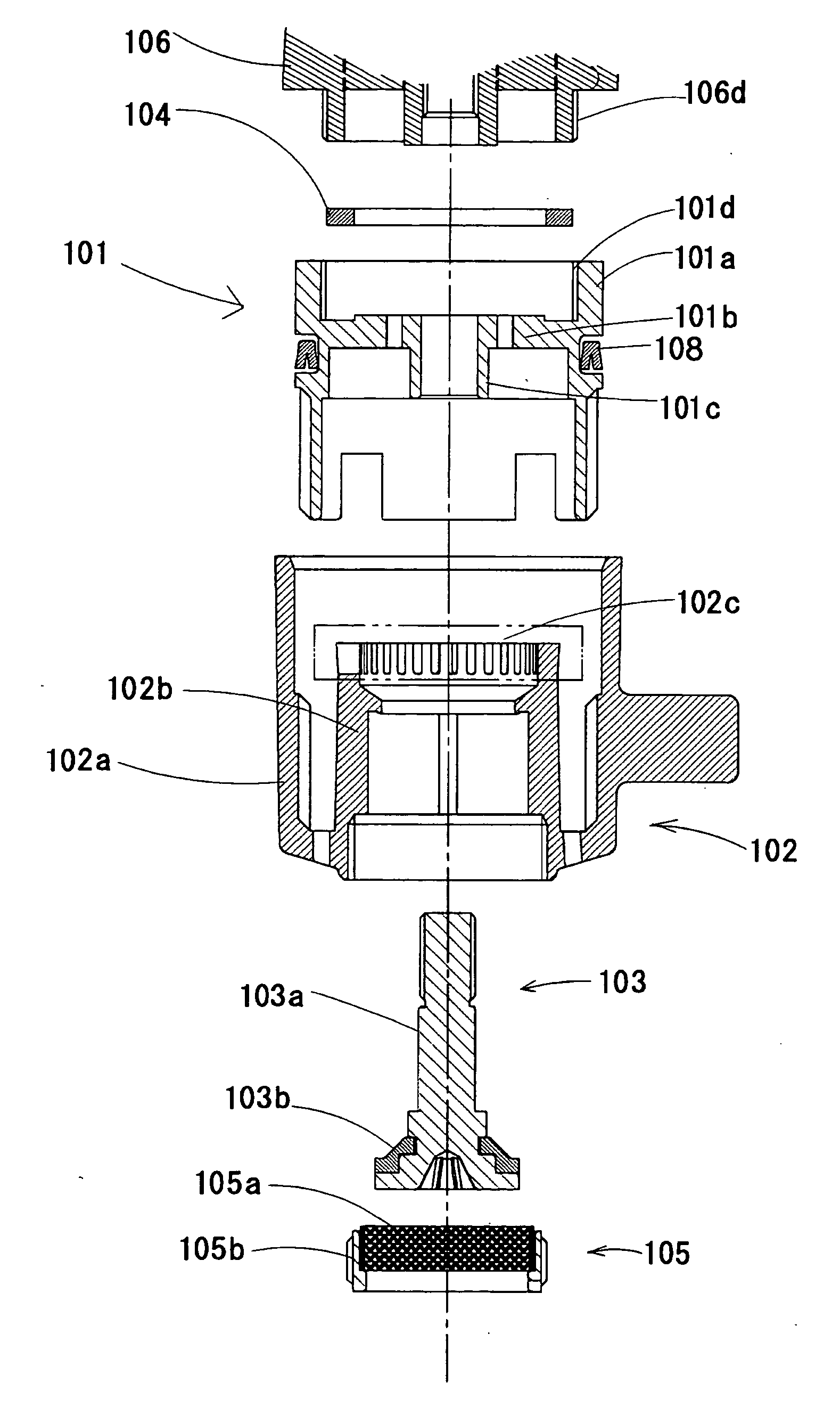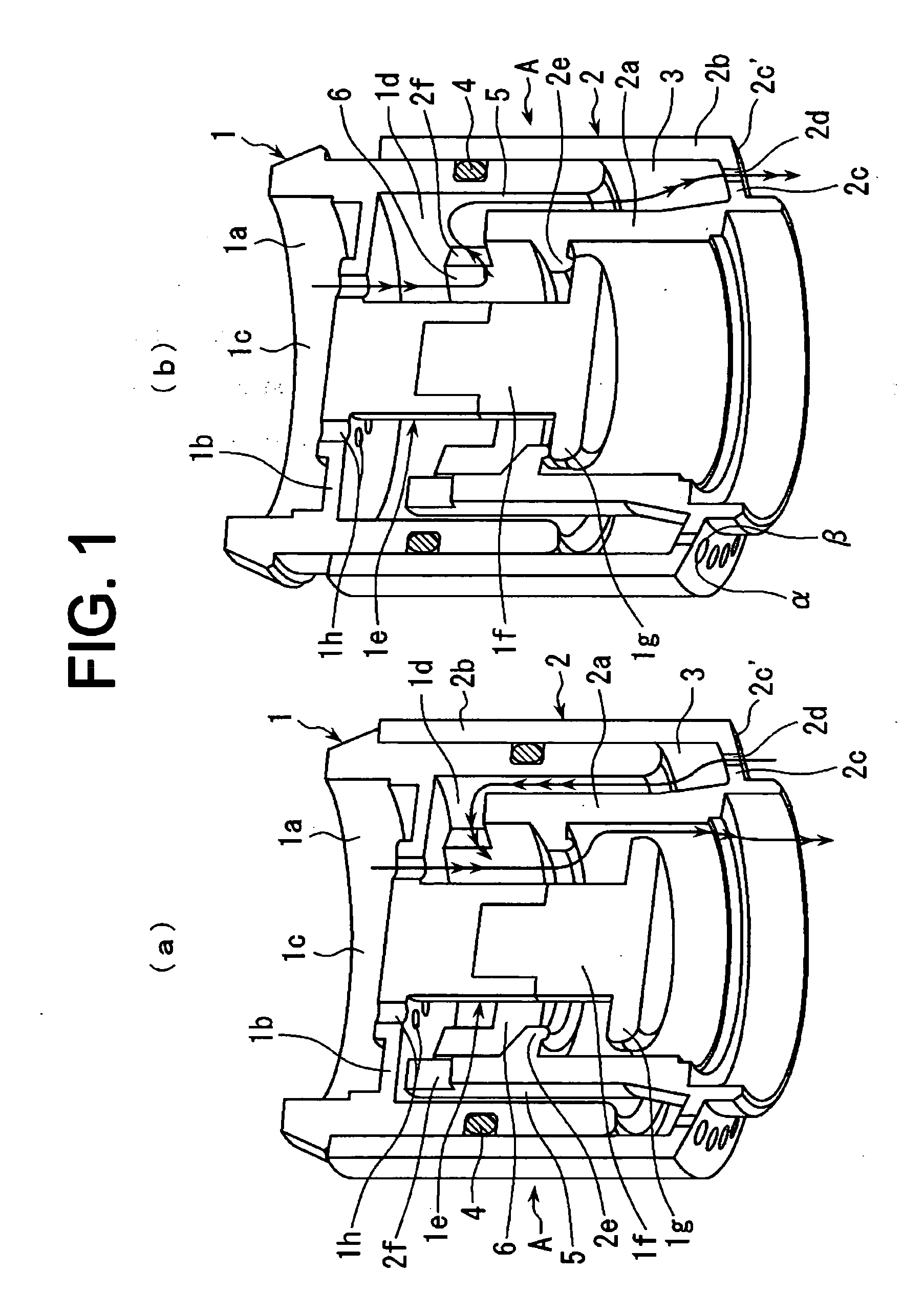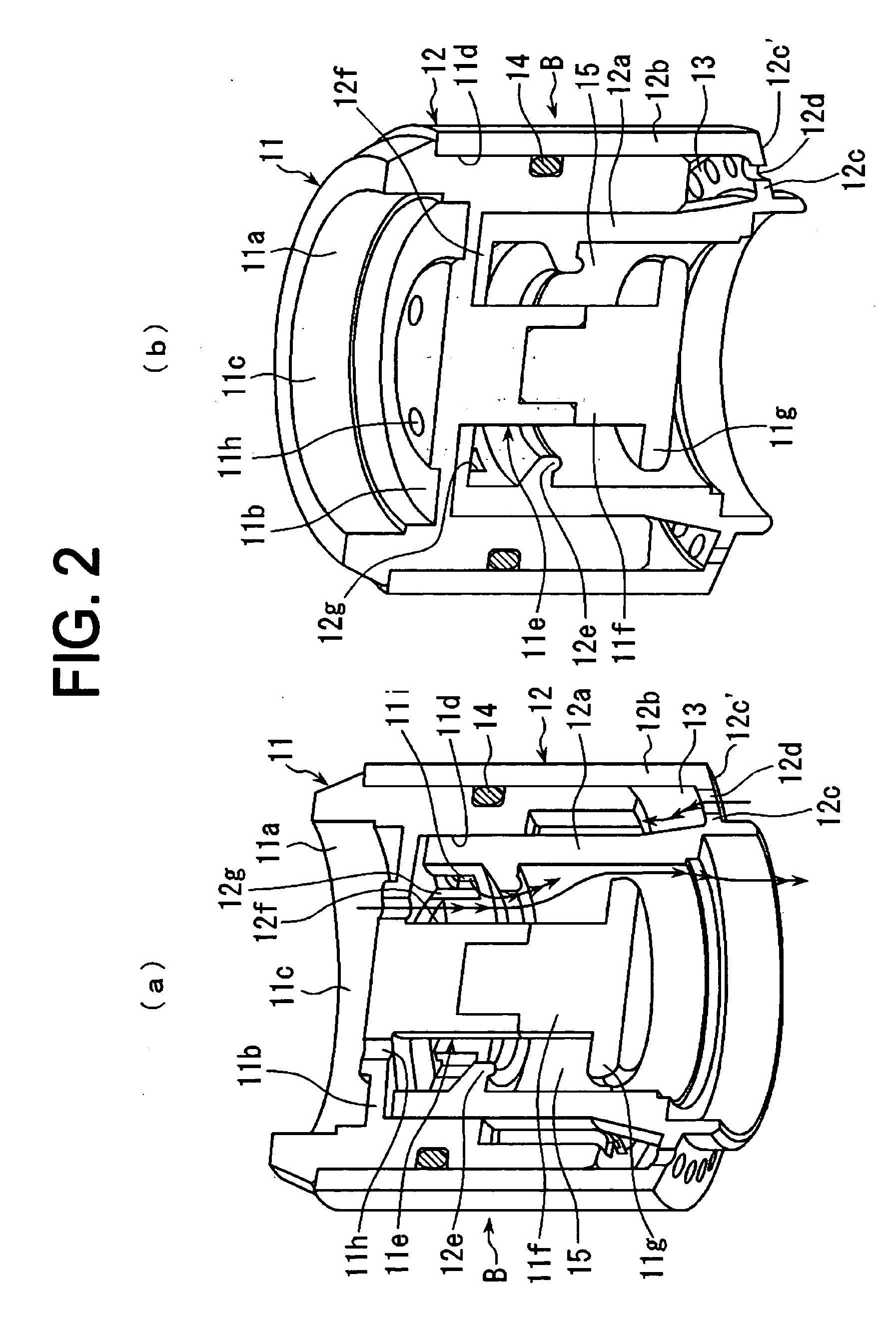Water discharge switching device
- Summary
- Abstract
- Description
- Claims
- Application Information
AI Technical Summary
Benefits of technology
Problems solved by technology
Method used
Image
Examples
first embodiment
[0118] First, a water discharge switching device in accordance with the present invention will be described.
[0119] As shown in FIG. 1, a water discharge switching device A has a first cylindrical body 1. A fitting portion 1a to be fitted to an existing faucet is formed at one end of the first cylindrical body 1. Near the fitting portion 1a is formed a partition wall 1b. An inflow chamber 1c and a discharge chamber 1d which are adjacent to each other in a longitudinal direction of the first cylindrical body 1 are defined by the partition wall 1b. The inflow chamber 1c is opposed to the fitting portion 1a.
[0120] A pillar-shaped body 1e extends in a longitudinal direction from the central portion of the partition wall 1b to form the discharge chamber 1d in an annular shape. A flange-shaped valve seat 1g is formed at an end portion 1f of the pillar-shaped body 1e. The end portion 1f of the pillar-shaped body 1e is formed separately from the other parts of the first cylindrical body 1 a...
second embodiment
[0141] A water discharge switching device in accordance with the invention will be described.
[0142] As shown in FIG. 2 to FIG. 4, a water discharge switching device B has a first cylindrical body 11. A fitting portion 11a to be fitted on an existing faucet is formed at one end of the first cylindrical body 11. Near the fitting portion 11a is formed a partition wall 11b. An inflow chamber 11c and a discharge chamber 11d which are adjacent to each other in a longitudinal direction of the first cylindrical body 11 are partitioned by the partition wall 11b. The inflow chamber 11c faces the fitting portion 11a.
[0143] A pillar-shaped body 11e extends in a longitudinal direction from the central portion of the partition wall 11b to form the discharge chamber 11d in an annular shape. A flange-shaped valve seat 11g is formed at an end portion 11f of the pillar-shaped body 11e. The end portion 11f of the pillar-shaped body 11e is formed separately from the other parts of the first cylindrica...
third embodiment
[0175] A water discharge switching device in accordance with the present invention will be described.
[0176] In FIG. 5 are shown constituent parts of an example of a water discharge switching device of the invention and in FIG. 6 is shown a cross-sectional view showing a state in which the water discharge switching device is switched to a state of discharging foaming water.
[0177] This water discharge switching device includes a first cylindrical body 101, a second cylindrical body 102, a flange-shaped valve seat 103, a packing 104, a filter part 105, and a U-shaped packing 108, these parts being assembled, and is fitted for use on a faucet hardware unit 106.
[0178] A fitting portion 101a to be fitted to the faucet hardware unit is formed at one end of the first cylindrical body 101 and a partition wall 101b is formed near the fitting portion 101a. A-pillar-shaped body 101c is formed so as to extend in a longitudinal direction from the central portion of the partition wall 101b and a...
PUM
 Login to View More
Login to View More Abstract
Description
Claims
Application Information
 Login to View More
Login to View More - R&D
- Intellectual Property
- Life Sciences
- Materials
- Tech Scout
- Unparalleled Data Quality
- Higher Quality Content
- 60% Fewer Hallucinations
Browse by: Latest US Patents, China's latest patents, Technical Efficacy Thesaurus, Application Domain, Technology Topic, Popular Technical Reports.
© 2025 PatSnap. All rights reserved.Legal|Privacy policy|Modern Slavery Act Transparency Statement|Sitemap|About US| Contact US: help@patsnap.com



